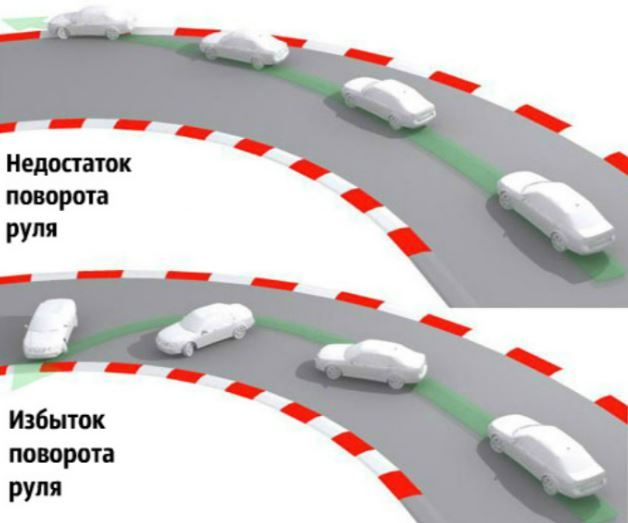
Oversteer and understeer - what you need to know about them?
Content
Both oversteer and understeer are the behavior of a car that has lost traction and begins to move against driver commands and steering angle. However, each of them requires a different reaction in order to control the vehicle and allow it to return to the correct path. What are they characterized by? How to respond to both types of slippage?
What is car understeer and when does it occur?
This is definitely one of the most dangerous situations that can happen to a driver while driving. Understeer is when the car's front wheels lose traction. For this reason, the car turns much less than the tire and steering wheel settings suggest, and “falls out” of the turn - sometimes it even goes completely straight, and the driver cannot turn in any way. This phenomenon most often occurs when driving front-wheel drive vehicles - especially if we exceed the safe speed.
Car understeer - how to behave?
First of all, stay calm. The driver's quick reactions do not contribute to the control of the situation - regardless of the reason for the loss of control over the vehicle. Any violent reaction can only aggravate the situation and end your trip to the ditch, but worse. So what to do? Gradually start releasing the accelerator pedal - so that the car starts to slow down on its own, as part of the so-called. engine braking. At the same time, try to press the brake and gradually change the position of the steering wheel to the opposite of the current arc that it overcomes. Avoid any sudden movements.
What if that's not enough?
However, sometimes it may turn out that the standard ways to get out of understeer are not enough and it is not possible to restore front axle traction. What can be done then? Often the only solution, but also the final solution, is to apply the handbrake or use it for a short time to quickly go from understeer to oversteer and change direction - before an accident or off-road occurs. However, this is a very responsible maneuver that requires a lot of experience in correcting the behavior of the car, so not every driver can handle it.
What is oversteer?
In this case, we are dealing with a loss of traction on the rear axle of the car, which is manifested by its “leaving” the limits of the turn and the desire to overtake the front of the car. This phenomenon is more common in rear-wheel drive vehicles, for example, when accelerating too fast, but also in front-wheel drive models, especially when “playing” the handbrake on slippery surfaces or when cornering dynamically on ice and snow. It is also used to oversteer the car during the so-called drifting, i.e. transfer of the car to a controlled skid and its control.
Skidding with oversteer - what to do?
If the vehicle oversteers in a corner, it is very easy to lose control and allow the rear wheels to spin out of the corner, putting the driver and other road users in serious danger. In this case, the wheels must be turned in the same direction as the rear of the vehicle to regain traction. While it seems natural for many drivers to try to regain traction with the rear wheels by turning in the opposite direction of rear axle spin, this is a mistake that increases slip and can lead to spin.
Car oversteer - what to do?
If these methods fail, experienced drivers can take the more drastic step of trying to maintain traction by shifting weight to the front of the car. This is especially true for front wheel drive vehicles. Apply the brake and clutch at the same time and the car will begin to dive, transferring weight to the front of the car and limiting oversteer.
Oversteer and understeer - the key is control!
Regardless of what is causing the loss of traction, it is important to keep the driver in control and regain front or rear traction as quickly as possible to ensure safe cornering. If you keep your composure and control the steering of the car, you will most likely be able to pull it out of a skid safely.

